Diageo is a stock market phenomenon. And no wonder. In China and South Korea, rich execs think nothing of spending £1,500 on a whisky tasting at one of Diageo’s Johnnie Walker whisky houses. In the US, sales of candy-flavoured vodkas are fuelling growth to the tune of 5%-6%. And the acquisition of key local brands in recent years, including Mey Icki in Turkey and Ypioca in Brazil, means over 40% of Diageo’s sales are now in developing markets - resulting in a 100% surge in Diageo’s share price since the start of the recession.
In fact, the only real drag on Diageo has been Western Europe. Over the same period, sales have fallen 4% per annum. So can it kickstart growth, and if so how?
The man charged with turning around the £2.2bn operation is Western Europe president John Kennedy, a 48-year-old high-flyer from New York. And having been in the role now for 12 months, he’s in no doubt of the potential for growth. “We are the swing factor,” he says. “If we can deliver great results here, it makes a massive difference for Diageo. And that’s my whole mission. The only [measure of] success is reinvigorating the business to get back to growth.
“We are the swing factor. If we can deliver great results here, it makes a massive difference for Diageo. And that’s my whole mission”
“There’s been a significant decline, a lot of rightsizing, and pulling back from a lot of investment. Those were all the right decisions. However, looking forward, in a more stable environment in the Eurozone, we can see a way to drive the business back to growth over the next couple of years. We are the leading spirits company in Western Europe, but that’s with a share of a little under 20%. So there’s masses of potential just in share growth. And the net profit margins are strong, so there’s no reason not to look at it.”
Kennedy’s strategy is simple, and it’s the same at a European and GB basis, he explains. It involves “three or four levers”. The first is to step up innovation. “If you look at the percentage of sales from NPD every year and benchmark Western Europe against the US, where I looked after innovation, or other markets like Africa, it’s only at half the scale. And there’s nothing getting in the way of making that significantly bigger. If we can get the pipeline ramped up, get the machine in place to commercialise successfully, we think [innovation] can be two or three times bigger.
The second is what Diageo calls ‘Reserve’ - the luxury spirits market. “In every category you look at - gin, vodka , whisky, tequila, no matter what - there’s a massive international trend where the more expensive the segment, the higher the growth rate. The growth in premium is 14% in GB and double-digit in Europe, too, so it’s already happening here, but it’s only just starting.
“It’s still very small versus the US, where the market [for premium spirits] has exploded in the last 10 to 15 years. Asia is very high end, too. It’s amazing what they’re spending.”
Snapshot
Job title: President, Diageo, Western Europe, since November 2012
Born: Bronx, New York
Age: 48
Status: married to an English wife. Has three girls, age 16, 14, 12
Home: a flat in Notting Hill (weekdays) in Dublin with family at weekend
Education: Economics, Duke University, North Carolina
Career: after earlier spells at GSK and Quaker Oats, Kennedy has worked for Diageo since the mid 1990s in roles spanning Ireland, Australia, the US, Canada, Southern and Western Europe
Hobbies: Bike riding. “Up to a year ago, I did the occasional triathlon but I got injured”
Book: “I like to get stuck into the local culture. Because Germany is an important market for us, I read a very long treatise on the Prussian Empire, which was really interesting”
The third piece for Kennedy is the route to consumer. It’s only two years since Diageo created Western Europe as a single organisational market, consolidating all the functions, but it’s having a powerful effect. “When we started looking at our commercial organisation through the same lens, with the same measurements, country by country, what we learned was our approach to route to consumer, our sales coverage, frequency of callage, everything about the capability we have at the commercial end, has been inconsistent.”
Of course, the structure of the trade is different country by country. In Spain, for example, the on-trade is particularly strong in Germany it is the off-trade in the UK it is a mix. Can Diageo really adopt a one-size-fits-all approach to such a diverse market as Europe? Kennedy argues that while there are differences, some of the inconsistencies have been operational.
“If you look at the on-trade, and say, what percentage of outlets should we call on, what kind of range should we have, what technology should we use to understand store level data, there are common principles that should be applied everywhere, and we’re not doing that yet. There are big opportunities to upgrade the quality of our sales organisation and route to consumer that we think will drive quite a big prize across Europe.”
Kennedy’s model is the US. “We did exactly the same thing there a decade ago. We collapsed five markets into one with a common approach to marketing, distributor management and innovation. Out of that we got tremendous rewards in terms of economies of scale. Although Europe is much more varied, there is still a big step forward we can take from doing things at scale across multiple countries.”
Not least with marketing. “We’re making a big effort to do fewer programmes at greater scale, with more focus on above-the-line campaigns that use common copy, so your working spend is higher. Our brands are mainly international, and the way big brands succeed is, you do a few things well you invest the assets to do the advertising, the packaging, the merchandising, and… then you deploy across a lot of countries.”
By re-engineering marketing in this way, Diageo’s media spend this year is up by 35%, but without any increase in total marketing spend, he claims. And every year he expects Diageo to become “significantly smarter” in its deployment of resources. “Inertia is powerful. But particularly in Europe, because we have a declining market, we have to be disciplined to ensure any spend is effective. If it’s not, it gets reallocated somewhere else. Never mind big change programmes. That’s an everyday mentality we’ve got to bring to bear.”
Swagger
Even more important is having a positive mental attitude. A few weeks ago, Diageo brought 2,000 execs together in a room for three days in Barcelona. Ostensibly, the conference was designed to explain the strategy while having some fun (breaking the Guinness World Record for the most people shaking the same cocktail at the same time). But even more important was to achieve the right mindset within the business. Or as he puts it, “to get the swagger back”.
“We lost some of that during the recession,” Kennedy admits. “We need to shift the mindset from ‘we’re in a tough recession, we need to play defence’ to ‘there is a great growth opportunity in Europe, and we’re going to take advantage of it and win in the marketplace’, because I do believe having the right attitude makes a huge difference.” Kennedy is encouraged by the progress to date. “When we measure how we’ve done so far, we’re only at 5,6, 7 out of 10. But if we push hard on every one of the levers, we think it could lead to a turnaround.”
The GB business has been one of the first markets to really respond, says Kennedy. A good thing too, because “it’s a big engine. If you look at GB, it’s well developed for Diageo, but it’s critical that it grows for us. It’s about a third of the Western Europe business. I can’t really make Western Europe succeed without that happening.”
While the Eurozone has been in turmoil, GB has actually been relatively stable - “business has been flat over the past three to four years,” he says - but it’s grown by 3% in the last six months. “We’ve had a good summer. Innovation has had a big impact. The Pimm’s elderflower & blackberry, the Gordon’s [elderflower and cucumber] flavours, a number of new premix products, and the Parrot Bay frozen pouches. We launched them over the summer. They’ve all made a difference.”
In total the number of innovation projects has increased from a dozen to about 35-40 in the last 12 months, Kennedy estimates. “What we’ve seen is, quarter by quarter, we’ve gone from 10% growth in new product sales each quarter a year ago, to about 50% in the last two quarters. I’ve just put a lot people and money against it, to make sure we have a pipeline of great product. And we have the space in our sales force to commercialise exceptionally well.”
Turning around Bailey’s
More recently, Smirnoff Gold has had “a very strong, positive reaction,” he adds. “We expect it to have a strong year.” And then there’s Bailey’s. Even before the launch of the new Chocolate Luxe variant - “a fantastic product, which should be a big hit over Christmas” - turning round Bailey’s had been a big play for Diageo since Kennedy’s arrival.
“It’s one of the most loved spirit brands in the country, but it had a tough time in the recession. What we’ve done is gone on the front foot. We’ve made a big investment in advertising since early this calendar year. There’s new copy breaking for Christmas - [the first time Baileys has been on TV in five years] - which looks great. It’s always been a very responsive brand to marketing. If you get the right communication, get good weights out there in terms of media presence, and good merchandising, you get a very strong response.”
New advertising is also being used to support so-called ‘Signature’ drinks. In the last six months Smirnoff advertising has focused on Smirnoff Apple Bite, a cocktail serve featuring apple juice and lemonade. “It’s very cool Smirnoff advertising. As a signature drink, we promote it in the on-trade, but we market it everywhere. In a versatile category like vodka, telling people how to drink it makes a real difference. That programme is working well, particularly in the on-trade.”
“I wandered into four or five pubs the other day. I talked to some of the barmen, asked what’s happening. That’s where you get a real fingertip feel. I love the data but only when I marry it to talking to real people who can tell me what they see”
And despite enjoying close to 30% share, and the fact that the UK’s whisky-drinking population is ageing, Kennedy still believes the GB spirits business has the potential to grow. “As we benchmark, we’re still relatively low versus developed markets like the US. We can see that when we excite customers with new products and new ways to sell, you bring people in. You particularly see that in the on-trade. The new outlets tilt a lot towards spirits, and it’s working for them. Where you have a great spirits offer, you’re pulling in customers, and they’re willing to trade up.”
As a result, the ‘Reserve’ segment - the single malts, Ciroc vodka, Don Julio tequila, Bulleit Bourbon and Johnnie Walker blends - is already growing in the mid-teens, says Kennedy. And he’s supporting its development with additional sales resource. “We’ve already got a dedicated sales force, and just increased it by 20%. We are building a capability that can do the hand selling, and [teach the] high-end craft spirits to the on-trade. We think it will be a competitive advantage in the future. We’ve seen a lot of success with that in the US, and in the first couple of years here, it’s worked exceptionally well, so we’re giving that a further push.”
Kennedy saw at first hand how lively the London cocktail scene is, visiting a number of key ‘Reserve’ outlets during London Cocktail Week (which Diageo sponsored). He reels off Shoreditch, the new Gordon Ramsay/David Beckham restaurant in Southwark, as well as Mahici, Bougie and the Brompton Club.
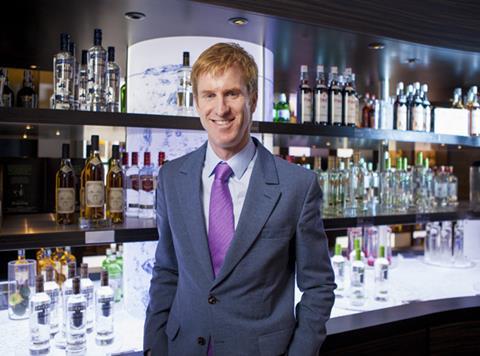
It’s important to get out and about, he says. And not just to bars and pubs. “I grew up in marketing, so I’m very interested in great innovation and great marketing, and exciting consumers about what we do. But I find I learn most when I just talk to people. My habit is, if I’m in town, and I need to go to the bank, say, I make sure I walk past the Asda in Park Royal [near Diageo’s HQ], taking pictures, sending them to the brand team.” He also regularly visits pubs near his flat in Notting Hill. “I wandered into four or five pubs, the other day. I talked to some of the barmen, asked what’s happening. That’s where you get a real fingertip feel. I love the data but only when I marry it to talking to real people who can tell me what they see.”
While spirits are a clear focus, Guinness has not been forgotten. Like a lot of mainstream beers , share has declined in GB in recent years. But Kennedy is backing it with extra advertising support, as well as installing new St James’ Gate counter mounts in 18,000 pubs.
“We’ve gone after Guinness hard in GB and Ireland, putting about £10m in incremental investment into it, to get to competitive advertising rates, and to increase our presence in the pub, because Guinness is a brand that, when it has pride of place in a pub, when you see other people drink it, you immediately think ‘I’m going to get a great Guinness in this place’. And after three or four years of losing share, in the last few months, we’ve grown share in the on-trade.”
With the Johnnie Walker business also on TV for the first time in 50 years (see box), and Captain Morgan rum showing “great growth” in the UK - “and everywhere we put effort into it” - Diageo is well positioned to grow, Kennedy adds.
Missing out on tequila? And cider?
But what about tequila? Having pulled out of a deal 12 months ago to acquire the Jose Cuervo brand, it’s missing out on one of the fastest-growing segments. Could Diageo create a tequila brand of its own?
“Watch this space,” says Kennedy. “We think we need a combination of winning with the assets we’ve got - Don Julio is going to be a great brand for us across many countries, with huge potential at the top end of the market - and in mainstream tequila, there’s a lot of work going on on what a Diageo offer would look like, and we would expect to advance a number of projects over the next few months.”
And what about cider? While beer and lager are in apparently long-term decline, cider sales are booming. Is there any chance Diageo could join the party? Kennedy believes the UK “has always been a great cider market,” and concedes that the combination of innovation and the hot weather has served the sector well. But the “interesting parallel” for Diageo is with craft beer. “People are interested in niche, premium, new products. We look at that through the Guinness lens. So the trend towards quality and craft is something we think we can take advantage of with Guinness. We think it’s one of the reasons the brand is faring relatively well.
Even in the small, craft end of the spirits category - where super-premium gins and vodkas like Sipsmith and Chase are achieving such rave reviews - Kennedy believes Diageo can play its part. As Kennedy says, Diageo’s strength lies in its ability to deploy at scale. But he believes Diageo can be - and must be - flexible in order to deliver growth and innovation.
“Our model is open. Some ideas we’ll invent, some will come from outside the business. We’ve done a number of joint ventures, particularly in the US, to develop new products. Our work with Sean Combs [to develop the Ciroc vodka brand], that worked pretty well. It’s selling two million cases a year. We have and will build a link with all the players and entrepreneurs who are innovating in spirits. We will work with players who we think have great ideas, who will help Diageo grow over time.”
Does Kennedy have a specific number in mind? “Some consumer goods want 50% of their innovation ideas to come from outside. We don’t have a set number, but we believe we’ll develop our own new products and do partnerships with other entrepreneurs. So, yeah, we’re a big company but we think we can tap into emerging trends and capitalise on them.”
Recruiting a new generation into whisky
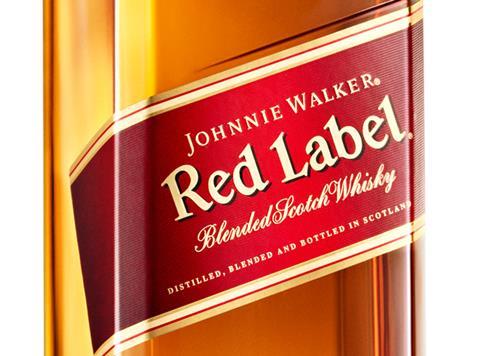
One intriguing aspect of Diageo’s new strategy for the UK is the renewed focus on Johnnie Walker Red Label, which is set to be advertised on TV for the first time since the early 1960s.
At the time, it was an entry-level blend. But it has developed into the most valuable spirit trademark in the world. “We sold over 20 million cases worldwide, last year,” says Kennedy. “And we just haven’t taken advantage of it in its home market. So we think there’s a huge potential, and this is the first year of putting significant money behind it.”
Kennedy says everyone in the GB business wants Johnnie Walker’s success to be part of their legacy, but the decision to back it reflects changes at the top. “Our new CEO, Ivan Menezes, I’m new to the GB business, Andrew Cowan is new in the last two years, we’ve all come in and said ‘it’s successful everywhere else why can’t we make that happen over here?’”
So what are Diageo’s expectations? And how are they planning to market it?
Red Label is expected to play at a premium to mainstream whiskies. “I don’t think you’ll take dedicated, current blended drinkers and have a big switch-out. We want to recruit a new generation into whisky and Red Label is a great brand to do that,” says Kennedy. “That’s not going to be an overnight success, but we are in it for the long term.
It helps that the marketing “assets supporting it are so good”. “Because it’s a global brand, you have Formula 1, you have a great pool of advertising copy you can lean into. We’re doing the Ryder Cup in Gleneagles next year, so there’s lots of potential.”
The Johnnie Walker brand also now supports good-better-best tiering that supermarkets can only dream of. “On innovation, the Reserve piece really works [in generating PR coverage]. We have the Voyager (a luxury yacht], which came from Shanghai, and has visited 10 different ports, including Tower Bridge, and then Edinburgh, to promote Odyssey - a high-end luxury blend that costs £1,000 a bottle - as well as Johnnie Walker Blue Label. And we have the two new blends, Gold Label Reserve and Platinum 18-year-old. “They’ve been very successful at generating a lot of high-end customer impact.”



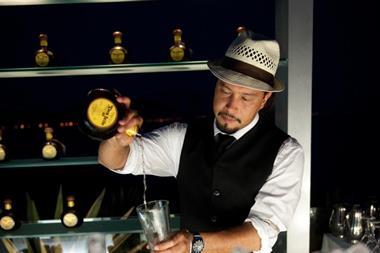
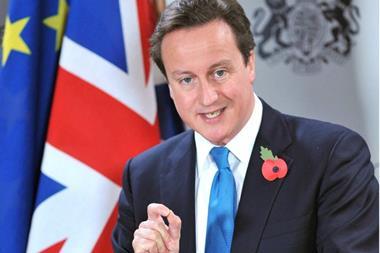
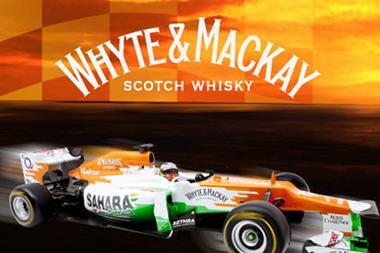
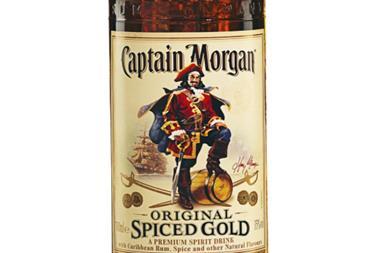
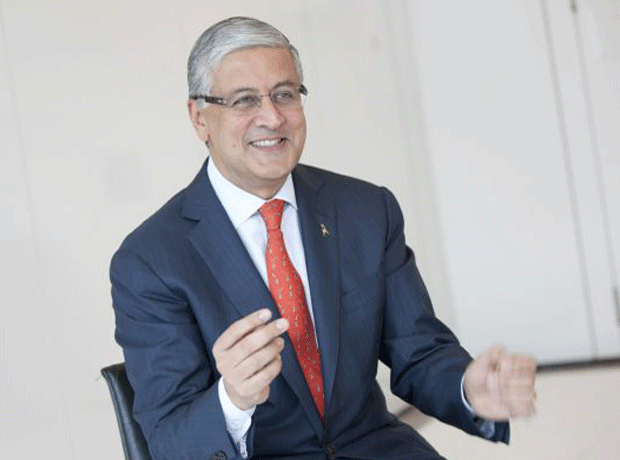
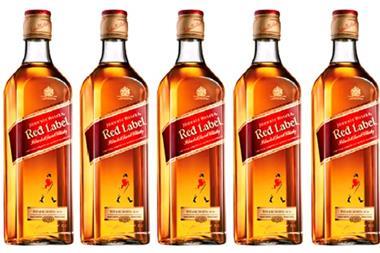

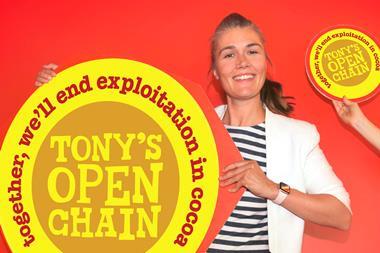
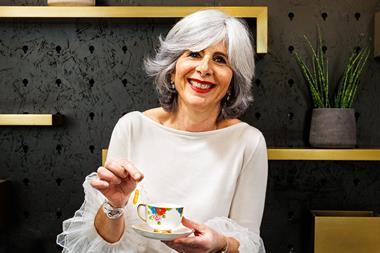
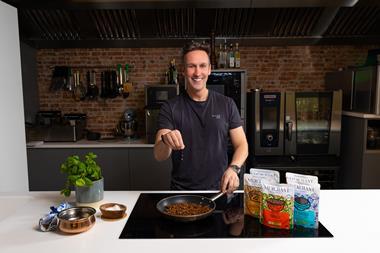
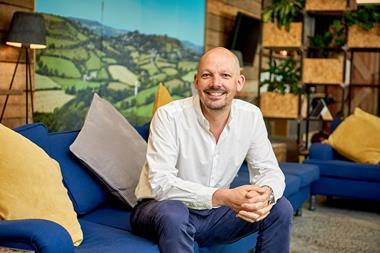

No comments yet